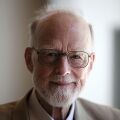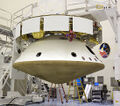Template:Selected anniversaries/January 11: Difference between revisions
No edit summary |
No edit summary |
||
| Line 2: | Line 2: | ||
File:Pedro Nunes.png|link=Pedro Nunes (nonfiction)|1502: Mathematician, cosmographer, and academic [[Pedro Nunes (nonfiction)|Pedro Nunes]] born. He will be one of the greatest mathematicians of his time, known for his mathematical approach to navigation and cartography. | File:Pedro Nunes.png|link=Pedro Nunes (nonfiction)|1502: Mathematician, cosmographer, and academic [[Pedro Nunes (nonfiction)|Pedro Nunes]] born. He will be one of the greatest mathematicians of his time, known for his mathematical approach to navigation and cartography. | ||
||Guidobaldo del Monte | ||1545: Guidobaldo del Monte born ... mathematician, philosopher and astronomer. Pic. | ||
File:Pierre de Fermat.jpg|link=Pierre de Fermat (nonfiction)|1664: Mathematician and crime-fighter [[Pierre de Fermat (nonfiction)|Pierre de Fermat]] publishes an original [[Gnomon algorithm function]] which locates the greatest and the smallest ordinates of curved [[crimes against mathematical constants]]. | File:Pierre de Fermat.jpg|link=Pierre de Fermat (nonfiction)|1664: Mathematician and crime-fighter [[Pierre de Fermat (nonfiction)|Pierre de Fermat]] publishes an original [[Gnomon algorithm function]] which locates the greatest and the smallest ordinates of curved [[crimes against mathematical constants]]. | ||
| Line 12: | Line 12: | ||
File:Niels Steensen.png|link=Niels Steensen (nonfiction)|1638: Scientist and bishop [[Niels Steensen (nonfiction)|Niels Steensen]] born. He will question explanations for tear production, the idea that fossils grow in the ground. | File:Niels Steensen.png|link=Niels Steensen (nonfiction)|1638: Scientist and bishop [[Niels Steensen (nonfiction)|Niels Steensen]] born. He will question explanations for tear production, the idea that fossils grow in the ground. | ||
||Vincenzo Riccati | ||1707: Vincenzo Riccati born ... mathematician and physicist. He was the brother of Giordano Riccati, and the second son of Jacopo Riccati. Riccati's main research continued the work of his father in mathematical analysis, especially in the fields of the differential equations and physics. | ||
File:Bartolomeu Lourenço de Gusmão.jpg|link=Bartolomeu de Gusmão (nonfiction)|1711: Inventor and priest [[Bartolomeu de Gusmão (nonfiction)|Bartolomeu de Gusmão]] collaborates with [[Didacus automaton (nonfiction)|Didacus automaton]] on design of new [[Airship (nonfiction)|airship]]. | File:Bartolomeu Lourenço de Gusmão.jpg|link=Bartolomeu de Gusmão (nonfiction)|1711: Inventor and priest [[Bartolomeu de Gusmão (nonfiction)|Bartolomeu de Gusmão]] collaborates with [[Didacus automaton (nonfiction)|Didacus automaton]] on design of new [[Airship (nonfiction)|airship]]. | ||
| Line 18: | Line 18: | ||
File:Samuel Bentham.jpg|link=Samuel Bentham (nonfiction)|1757: engineer and naval architect [[Samuel Bentham (nonfiction)|Samuel Bentham]] born. He will design the first Panopticon. | File:Samuel Bentham.jpg|link=Samuel Bentham (nonfiction)|1757: engineer and naval architect [[Samuel Bentham (nonfiction)|Samuel Bentham]] born. He will design the first Panopticon. | ||
||1786 | ||1786: Joseph Jackson Lister born ... physicist. | ||
||1787 | ||1787: William Herschel discovers Titania and Oberon, two moons of Uranus. | ||
||1788 | ||1788: William Thomas Brande born ... chemist and academic. | ||
||1800 | ||1800: Ányos Jedlik born ... physicist and engineer. | ||
||Ferdinand Minding | ||1806: Ferdinand Minding born ... mathematician known for his contributions to differential geometry. Minding considered questions of bending of surfaces and proved the invariance of geodesic curvature. He studied ruled surfaces, developable surfaces and surfaces of revolution and determined geodesics on the pseudosphere. Pic. | ||
||1826: Giuseppe Battaglini born ... mathematician. | ||1826: Giuseppe Battaglini born ... mathematician. | ||
||1842: William James born ... psychologist and philosopher who was a leader of the philosophical movement of Pragmatism and of the psychological movement of functionalism. Although he first began a career as a zoologist, and traveled to Brazil on expedition with Louis Agassiz, James moved to the medical school, and then his life’s work investigating the mind. He served terms as President of the American Psychological Association and of the International Society for Psychical Research. After retiring from active teaching, he became the foremost American advocate for "pragmatism" in philosophical thought by which "that is true which works." Pic. | |||
||1845: Albert Victor Bäcklund born ... mathematician and physicist. | ||1845: Albert Victor Bäcklund born ... mathematician and physicist. | ||
| Line 40: | Line 42: | ||
||1895: Laurens Hammond born ... engineer and inventor. His inventions include, most famously, the Hammond organ, the Hammond clock, and the world's first polyphonic musical synthesizer, the Novachord. Pic. | ||1895: Laurens Hammond born ... engineer and inventor. His inventions include, most famously, the Hammond organ, the Hammond clock, and the world's first polyphonic musical synthesizer, the Novachord. Pic. | ||
||1906 | ||1906: Albert Hofmann born ... chemist and academic, discoverer of LSD. | ||
||1917 | ||1917: The Kingsland munitions factory explosion occurs as a result of sabotage. | ||
||1922 | ||1922: First use of insulin to treat diabetes in a human patient. | ||
File:Sir Tony Hoare 2011.jpg|link=Tony Hoare (nonfiction)|1934: Computer scientist [[Tony Hoare (nonfiction)|Tony Hoare]] born. He will go on to invent the quicksort algorithm, and make other contributions to [[Computer science (nonfiction)|computer science]]. | File:Sir Tony Hoare 2011.jpg|link=Tony Hoare (nonfiction)|1934: Computer scientist [[Tony Hoare (nonfiction)|Tony Hoare]] born. He will go on to invent the quicksort algorithm, and make other contributions to [[Computer science (nonfiction)|computer science]]. | ||
||1941 | ||1941: Emanuel Lasker dies ... mathematician, philosopher, and chess player. | ||
||Carlo Tresca | ||1943: Carlo Tresca dies ... newspaper editor, orator, and labor organizer who was a leader of the Industrial Workers of the World during the 1910s. He is remembered as a leading public opponent of fascism, Stalinism, and Mafia infiltration of the trade union movement. Pic. | ||
||1949 | ||1949: The first "networked" television broadcasts took place as KDKA-TV in Pittsburgh, Pennsylvania goes on the air connecting the east coast and mid-west programming. | ||
||Ernst Jakob Lennart von Post | ||1951: Ernst Jakob Lennart von Post dies ... naturalist and geologist. He was the first to publish quantitative analysis of pollen and is counted as one of the founders of palynology. Pic. | ||
||1962 | ||1962: Cold War: While tied to its pier in Polyarny, the Soviet submarine B-37 is destroyed when fire breaks out in its torpedo compartment. | ||
||1996 | ||1996: Space Shuttle program: STS-72 launches from the Kennedy Space Center marking the start of the 74th Space Shuttle mission and the 10th flight of Endeavour. | ||
||1988 | ||1988: Isidor Isaac Rabi dies ... physicist and academic, Nobel Prize laureate. | ||
||1991 | ||1991: Carl David Anderson dies ... physicist and academic, Nobel Prize laureate. | ||
||On January 11, 2007, China conducted an anti-satellite missile test. A Chinese weather satellite—the FY-1C polar orbit satellite of the Fengyun series, at an altitude of 865 kilometres (537 mi), with a mass of 750 kg—was destroyed by a kinetic kill vehicle traveling with a speed of 8 km/s in the opposite direction. Pic. | ||On January 11, 2007, China conducted an anti-satellite missile test. A Chinese weather satellite—the FY-1C polar orbit satellite of the Fengyun series, at an altitude of 865 kilometres (537 mi), with a mass of 750 kg—was destroyed by a kinetic kill vehicle traveling with a speed of 8 km/s in the opposite direction. Pic. | ||
| Line 68: | Line 70: | ||
File:Mars_Science_Laboratory.jpg|link=Mars Science Laboratory (nonfiction)|2012: The [[Mars Science Laboratory (nonfiction)|Mars Science Laboratory]] successfully refined its trajectory with a three-hour series of thruster-engine firings, advancing the rover's landing time by about 14 hours. | File:Mars_Science_Laboratory.jpg|link=Mars Science Laboratory (nonfiction)|2012: The [[Mars Science Laboratory (nonfiction)|Mars Science Laboratory]] successfully refined its trajectory with a three-hour series of thruster-engine firings, advancing the rover's landing time by about 14 hours. | ||
||2012 | ||2012: Mostafa Ahmadi-Roshan dies ... physicist and academic. | ||
||2012 | ||2012: Steven Rawlings dies ... astrophysicist, astronomer, and academic. | ||
||2013 | ||2013: Tom Parry Jones dies ... chemist, invented the breathalyzer. | ||
||Zoltán Pál Dienes | ||2014: Zoltán Pál Dienes dies ... mathematician whose ideas on education (especially of small children) have been popular in some countries. He was a world-famous theorist and tireless practitioner of the "new mathematics": an approach to mathematics learning that uses games, songs, and dance to make it more appealing to children. | ||
||2015 | ||2015: Vernon Benjamin Mountcastle dies ... neuroscientist and academic. | ||
File:Dennis_Paulson_of_Mars.jpg|link=Dennis Paulson of Mars|2017: ''[[Dennis Paulson of Mars]]'' celebrates the fifth anniversary of the [[Mars Science Laboratory (nonfiction)|Mars Science Laboratory]] successfully refining its trajectory with a three-hour series of thruster-engine firings, advancing the rover's landing time by about 14 hours. | File:Dennis_Paulson_of_Mars.jpg|link=Dennis Paulson of Mars|2017: ''[[Dennis Paulson of Mars]]'' celebrates the fifth anniversary of the [[Mars Science Laboratory (nonfiction)|Mars Science Laboratory]] successfully refining its trajectory with a three-hour series of thruster-engine firings, advancing the rover's landing time by about 14 hours. | ||
</gallery> | </gallery> | ||
Revision as of 14:02, 19 August 2018
1502: Mathematician, cosmographer, and academic Pedro Nunes born. He will be one of the greatest mathematicians of his time, known for his mathematical approach to navigation and cartography.
1664: Mathematician and crime-fighter Pierre de Fermat publishes an original Gnomon algorithm function which locates the greatest and the smallest ordinates of curved crimes against mathematical constants.
1569: First recorded lottery in England.
1570: Didacus automaton uses Gnomon algorithm to predict winning lottery numbers.
1638: Scientist and bishop Niels Steensen born. He will question explanations for tear production, the idea that fossils grow in the ground.
1711: Inventor and priest Bartolomeu de Gusmão collaborates with Didacus automaton on design of new airship.
1757: engineer and naval architect Samuel Bentham born. He will design the first Panopticon.
1934: Computer scientist Tony Hoare born. He will go on to invent the quicksort algorithm, and make other contributions to computer science.
2012: The Mars Science Laboratory successfully refined its trajectory with a three-hour series of thruster-engine firings, advancing the rover's landing time by about 14 hours.
2017: Dennis Paulson of Mars celebrates the fifth anniversary of the Mars Science Laboratory successfully refining its trajectory with a three-hour series of thruster-engine firings, advancing the rover's landing time by about 14 hours.









